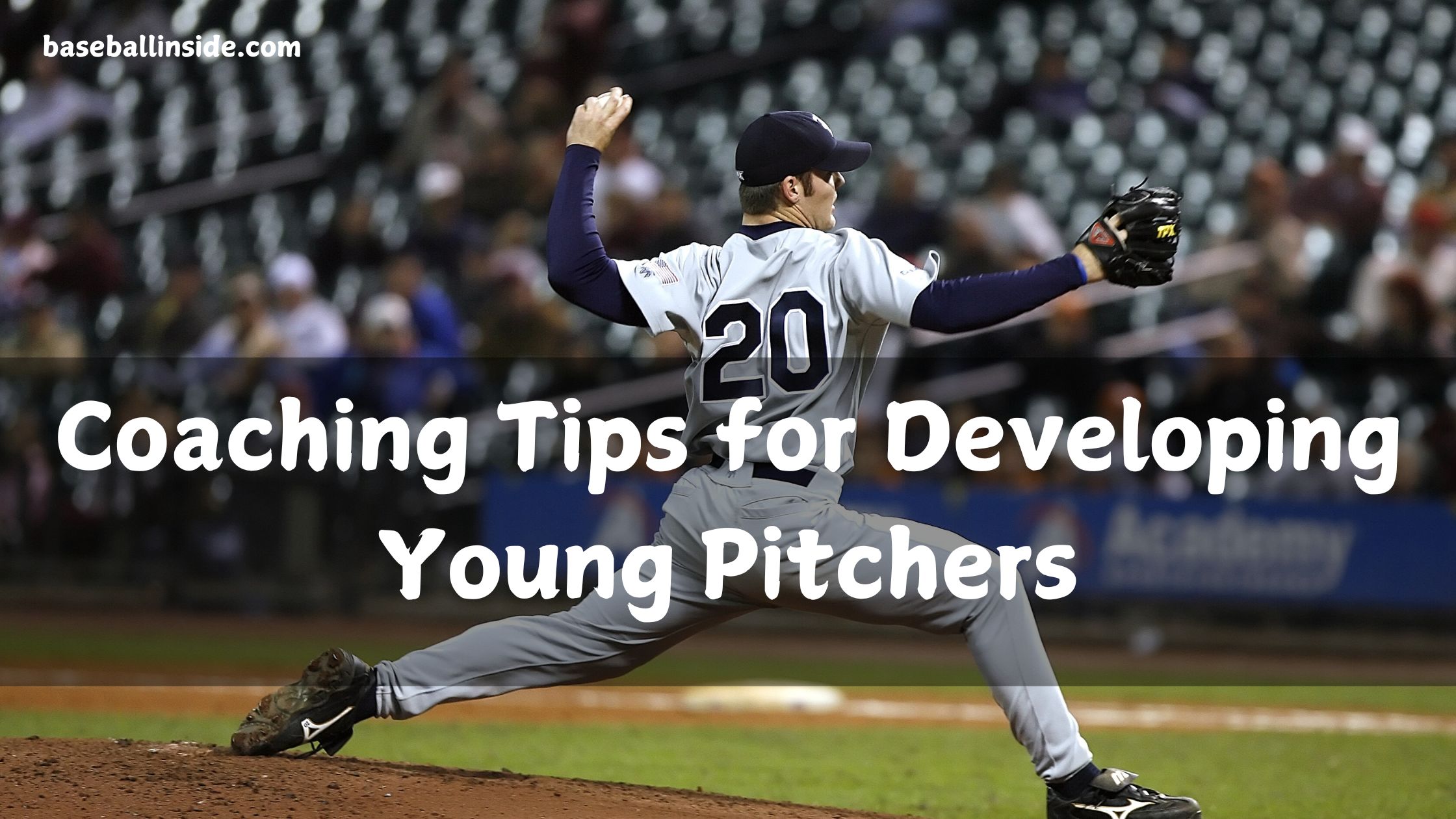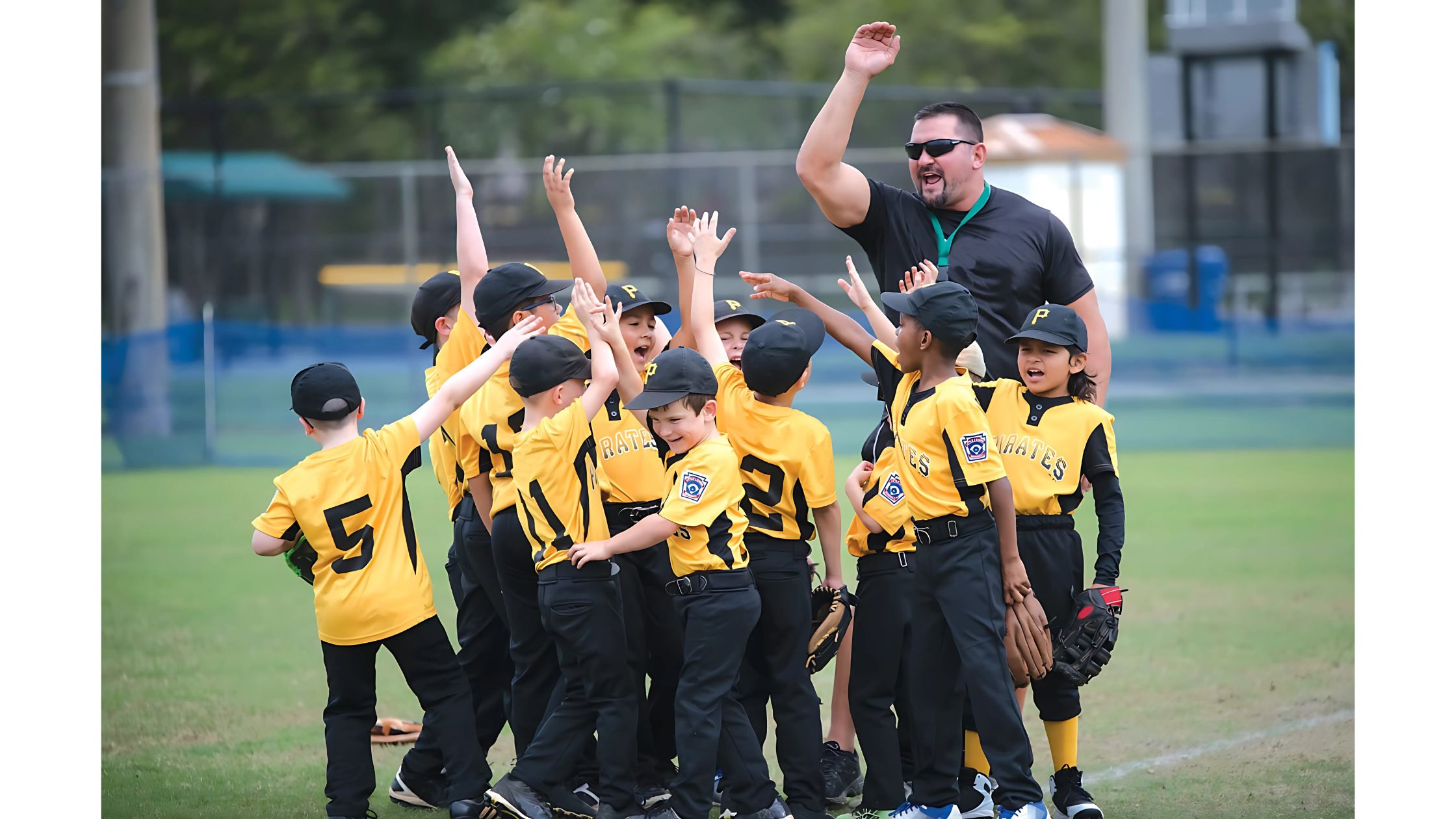Young pitchers need proper mechanics and consistent practice. Coaches should focus on building strength and confidence.Tips for Developing Young Pitchers
Developing young pitchers requires a blend of technical skills, mental toughness, and physical conditioning. Coaches should emphasize proper throwing mechanics to prevent injuries and improve efficiency. Encouraging regular practice helps young pitchers refine their skills and build muscle memory. Strength training and conditioning are essential to enhance performance and endurance.
Mental preparation is also crucial, as confidence on the mound can significantly impact game performance. Coaches should create a positive and supportive environment to foster growth and resilience. By focusing on these key areas, young pitchers can develop into well-rounded athletes, ready to excel in competitive play.
Building A Solid Foundation
Developing young pitchers requires a strong base. This foundation includes understanding the basic mechanics and proper warm-up routines. A solid foundation helps young pitchers avoid injuries and improve their skills effectively.
Basic Mechanics
Teaching basic mechanics is crucial for young pitchers. Focus on these key elements:
- Grip: Teach the four-seam fastball grip first. It’s the foundation for other pitches.
- Stance: Ensure a balanced and athletic stance. Feet should be shoulder-width apart.
- Wind-Up: Keep the wind-up simple. Focus on balance and rhythm.
- Stride: The stride should be straight and towards the plate. This ensures accuracy and power.
- Release: Focus on a smooth and consistent release point. This is key to control.
- Follow-Through: A proper follow-through reduces stress on the arm. It also improves balance.

Proper Warm-up
A proper warm-up routine is essential. It prepares the body and reduces injury risks.
| Warm-Up Activity | Duration | Purpose |
|---|---|---|
| Jogging | 5 minutes | Increase heart rate |
| Dynamic Stretches | 10 minutes | Improve flexibility |
| Arm Circles | 5 minutes | Warm up shoulder muscles |
| Light Throwing | 10 minutes | Prepare the arm for pitching |
Ensure each warm-up activity is done correctly. This keeps the young pitcher safe and ready to play.
Focus On Strength And Conditioning
Developing young pitchers requires more than just teaching the mechanics of a pitch. Strength and conditioning play a crucial role in their growth and success. By focusing on these areas, we can help young athletes build a solid foundation. This will enhance their performance and reduce injury risks.
Core Exercises
A strong core is essential for pitchers. It helps maintain stability and power during pitches.
- Planks: Start with a basic plank. Hold it for 30 seconds. Gradually increase the duration as strength improves.
- Russian Twists: Sit on the floor. Lean back slightly and lift your feet. Twist your torso from side to side while holding a weight.
- Bicycle Crunches: Lie on your back. Bring your knees towards your chest. Alternate touching your elbows to the opposite knee.
Arm Strengthening
Building arm strength is vital for young pitchers. It enhances their throwing speed and accuracy.
- Resistance Band Exercises: Use bands to perform shoulder rotations and extensions. This strengthens the shoulder muscles.
- Weighted Ball Throws: Use a slightly heavier ball. This increases arm strength without overstraining.
- Push-ups: A classic exercise that builds upper body strength. Ensure proper form to avoid injuries.
Incorporating these exercises into a routine will greatly benefit young pitchers. Consistency and proper technique are key. Make sure to monitor progress and adjust the intensity as needed.
Teaching Proper Grip And Release
Teaching young pitchers the proper grip and release is essential. It helps them develop accuracy, speed, and control. Correct techniques prevent injuries and build confidence. Let’s explore how to teach these fundamentals.
Fastball Grip
The fastball grip is the foundation for young pitchers. Here is how to teach it:
- Hold the baseball with the index and middle fingers across the seams.
- The thumb should rest underneath the ball, providing support.
- Ensure the grip is firm but not too tight.
- Encourage a relaxed wrist for a smooth release.
Practice these steps with repetition. It helps develop muscle memory and consistency.
Breaking Ball Techniques
Teaching breaking ball techniques requires patience. Start with the basics:
| Type | Grip | Release |
|---|---|---|
| Curveball | Place the middle finger along the seam. Thumb beneath the ball. | Snap the wrist upon release. |
| Slider | Hold the ball like a two-seam fastball. Slight pressure on the index finger. | Release with a slight twist of the wrist. |
Use visual aids like videos or diagrams to explain these techniques. It helps young pitchers understand the motion better.
Encourage daily practice with a focus on proper grip and release. Consistent practice builds confidence and improves performance. Be patient and provide positive feedback.

Emphasizing Mental Toughness
Developing young pitchers isn’t just about physical skills. It’s equally important to focus on mental toughness. Mental toughness helps pitchers stay calm under pressure and maintain focus during games. Below are some essential tips on handling pressure and maintaining focus.
Handling Pressure
Handling pressure is crucial for young pitchers. They should learn how to stay calm in tough situations. Here are some tips:
- Teach them deep breathing techniques to relax.
- Encourage positive self-talk to boost confidence.
- Practice game-like scenarios in training sessions.
Deep breathing helps to lower stress. Positive self-talk can increase their confidence. Practicing game scenarios helps them get used to real-game pressure.
Maintaining Focus
Maintaining focus is key to a pitcher’s success. Distractions can cause mistakes. Here are some ways to help young pitchers stay focused:
- Set short-term goals for each game.
- Use visualization techniques to imagine successful pitches.
- Teach them to focus on one pitch at a time.
Short-term goals keep their mind on the game. Visualization helps them prepare mentally. Focusing on one pitch at a time keeps them in the moment.
By emphasizing mental toughness, young pitchers can handle pressure and maintain focus, leading to better performance on the mound.

Incorporating Video Analysis
Incorporating video analysis into coaching young pitchers can significantly enhance their development. This modern technique allows for detailed examination of pitching mechanics, helping identify areas for improvement.
Technique Review
Video analysis offers a precise way to review pitching techniques. Coaches can slow down the footage to highlight specific movements. This helps young pitchers see their form in action.
- Identify improper arm angles
- Spot inconsistencies in foot placement
- Examine follow-through mechanics
By breaking down each movement, pitchers understand what changes are needed. This visual feedback is more effective than verbal instructions alone.
Progress Tracking
Using video analysis, coaches can track a pitcher’s progress over time. Recording sessions regularly allows for comparison.
- Record initial performance
- Implement coaching tips
- Record subsequent performances
Comparing videos helps pitchers see their improvements. This builds confidence and motivation.
A simple table can be useful for tracking key metrics:
| Date | Velocity (mph) | Accuracy (%) |
|---|---|---|
| 01/01/2023 | 50 | 70 |
| 02/01/2023 | 52 | 75 |
Tracking progress with data and video gives a clear picture of development. This approach ensures young pitchers stay on the right path.
Developing A Personalized Training Plan
Creating a training plan for young pitchers is essential. Each pitcher has unique strengths and weaknesses. A personalized plan helps them improve faster. It targets specific areas for development.

Setting Goals
Goals give direction and purpose to training. Set short-term and long-term goals. Short-term goals can be weekly or monthly. Long-term goals might span a season.
- Weekly Goals: Focus on small improvements.
- Monthly Goals: Aim for more significant progress.
- Seasonal Goals: Achieve major milestones.
Ensure goals are realistic and achievable. Adjust them as the pitcher improves.
Tracking Improvement
Tracking progress is crucial. It shows how well the pitcher is doing. Use a simple table to record data:
| Week | Velocity (mph) | Accuracy (%) | Notes |
|---|---|---|---|
| 1 | 50 | 60 | Needs work on accuracy |
| 2 | 52 | 65 | Improving steadily |
| 3 | 55 | 70 | Good progress |
Update the table weekly. This helps in adjusting the training plan.
Understanding Injury Prevention
Young pitchers are at high risk for injuries. Proper prevention can help them stay healthy. This section covers common injuries and recovery strategies.
Common Injuries
Young pitchers often face specific injuries. Here are the most common ones:
- Shoulder Injuries: These occur due to overuse and bad form.
- Elbow Injuries: The infamous “Little League elbow” is a common issue.
- Wrist Injuries: Poor grip and excessive pitching can cause these.
Understanding these injuries helps in early detection and prevention.
Recovery Strategies
Recovery is key to a pitcher’s health. Here are some effective strategies:
- Rest: Allow proper rest between games.
- Ice Therapy: Use ice packs to reduce swelling.
- Stretching: Regular stretching exercises improve flexibility.
- Strength Training: Build muscle strength to support joints.
These strategies help young pitchers recover faster and avoid long-term damage.

| Injury Type | Symptoms | Prevention Tips |
|---|---|---|
| Shoulder | Pain, Swelling | Proper Warm-up, Correct Technique |
| Elbow | Pain, Stiffness | Limit Pitch Counts, Use Proper Form |
| Wrist | Pain, Weak Grip | Check Grip, Strength Exercises |
Importance Of Rest And Recovery
Rest and recovery are crucial for young pitchers. These factors play a vital role in preventing injuries and enhancing performance. Ignoring rest can lead to fatigue and reduced effectiveness on the mound.
Sleep Patterns
Quality sleep is essential for a young pitcher’s recovery. Aim for 8-10 hours of sleep every night. Consistent sleep patterns help maintain energy levels and mental sharpness. Establish a bedtime routine to signal the body it’s time to sleep.
Avoid screens an hour before bed. The blue light from devices can disrupt sleep. Encourage reading a book or listening to soft music instead. Create a calm sleep environment with a cool, dark room.
Recovery Routines
Developing a solid recovery routine is key for young pitchers. Include activities like stretching, foam rolling, and light cardio. These activities help reduce muscle soreness and improve flexibility.
Hydration is another important aspect of recovery. Ensure young pitchers drink enough water throughout the day. Proper hydration aids in muscle function and recovery. Consider incorporating electrolyte drinks after intense workouts.
Nutrition also plays a role in recovery. Encourage a balanced diet with plenty of proteins, carbohydrates, and healthy fats. A post-game snack, like a banana and peanut butter, can aid in muscle repair.
Here’s a sample recovery routine table:
| Activity | Duration |
|---|---|
| Stretching | 10 minutes |
| Foam Rolling | 10 minutes |
| Light Cardio | 15 minutes |
| Hydration | Throughout the day |
| Balanced Meal | Post-game |
Recovery should be a priority in a young pitcher’s training plan. It ensures they remain healthy and perform at their best.
Frequently Asked Questions
How To Improve A Young Pitcher’s Accuracy?
Improving a young pitcher’s accuracy involves consistent practice. Focus on proper mechanics and regular drills. Encourage them to aim for specific targets. Monitor their progress and adjust techniques as needed.
What Are Good Drills For Young Pitchers?
Good drills include the towel drill, the balance drill, and long toss. These drills help develop mechanics, strength, and control. Regular practice is essential for improvement.
How Often Should Young Pitchers Practice?
Young pitchers should practice at least 3 times a week. Consistent practice helps develop muscle memory and improves technique. Balance practice with rest to prevent injury.
What Age Should Pitchers Start Training?
Pitchers can start basic training around age 8. Focus on fundamentals and gradually increase intensity. Ensure they enjoy the game and avoid burnout.
Conclusion
Developing young pitchers requires patience, guidance, and practice. Focus on mechanics, mental strength, and injury prevention. Encourage consistent training and positive reinforcement. These coaching tips will help young pitchers reach their full potential and enjoy the game. Stay dedicated, and watch them grow into skilled and confident athletes.


